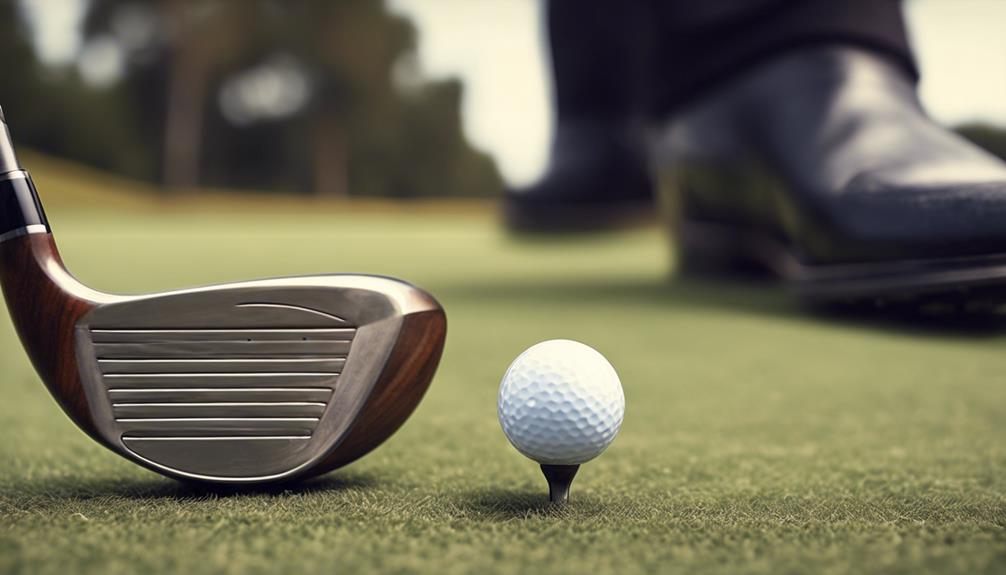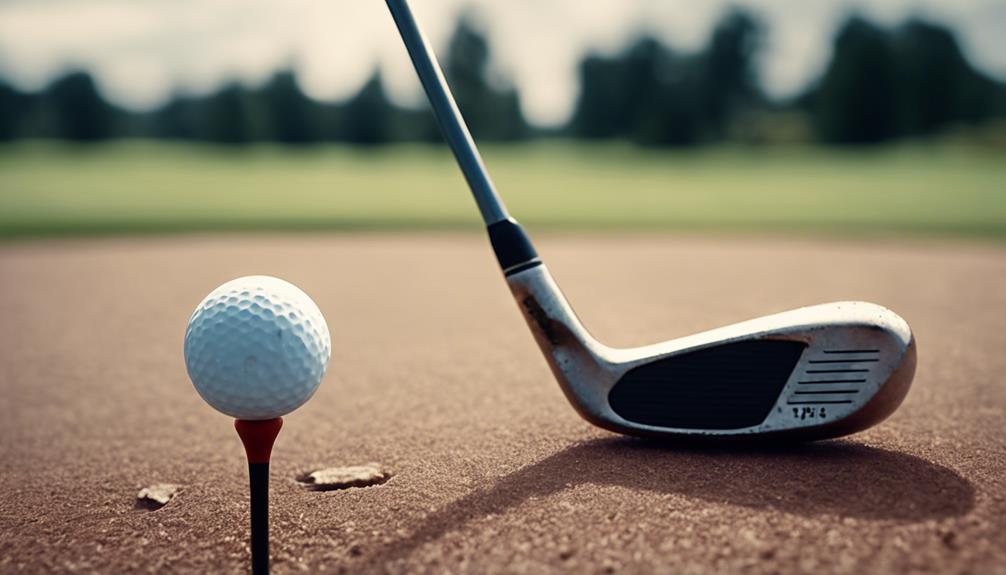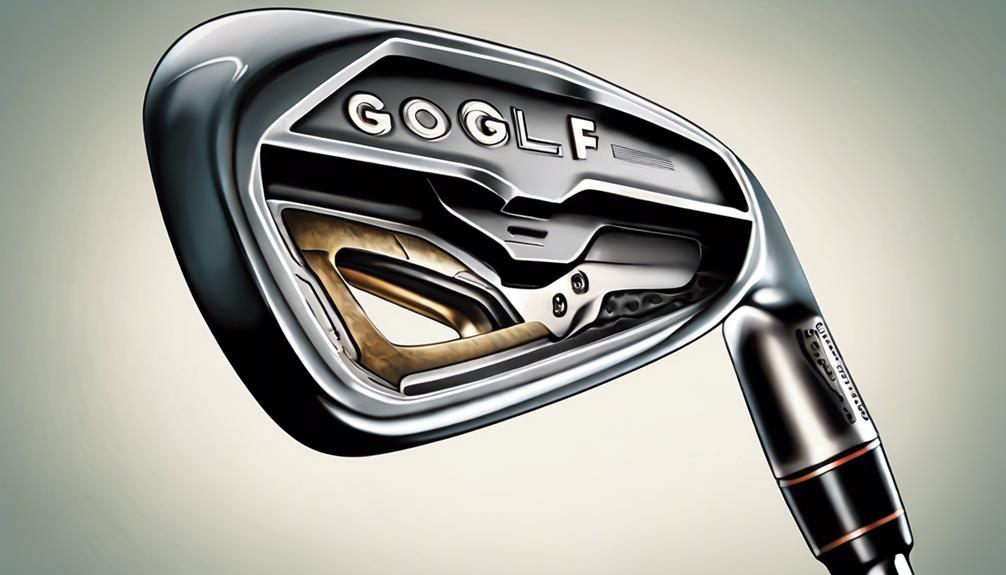- 7 Top Flite Golf Clubs XL for Improved Performance - September 28, 2024
- Top Flite Golf Clubs: Top 5 Reasons to Choose Them - September 28, 2024
- Top 3 Golf Club Fitters for a Perfect Swing - September 28, 2024
You'll find that modern golf clubs are crafted from a range of materials, each chosen for its unique properties and benefits. Titanium offers exceptional strength-to-weight ratio for driver heads, while stainless steel provides durability and a softer feel for irons and wedges. Graphite shafts increase swing speed, making them suitable for beginners and seniors, and carbon steel balances strength and affordability. Maraging steel enables thinner designs for higher ball velocity, and zinc is a budget-friendly option. As you explore the world of golf clubs, you'll discover how these materials come together to enhance performance, and the intricate details that set high-quality clubs apart.
Key Takeaways
- Golf clubs are made from various materials, including titanium, stainless steel, graphite, carbon steel, maraging steel, and zinc, each with its benefits and drawbacks.
- Titanium is used in driver heads for its exceptional strength-to-weight ratio, enhancing distance and accuracy.
- Stainless steel is preferred for irons and wedges due to its durability, corrosion resistance, and softer feel.
- Graphite shafts are lightweight and increase swing speed, but are prone to damage, making them suitable for beginners and seniors.
Material Properties and Characteristics
When selecting a golf club, understanding the material properties and characteristics that influence performance is essential, as each material brings unique advantages and trade-offs to the game.
Titanium, for instance, stands out for its exceptional strength-to-weight ratio, making it an ideal choice for driver heads. Its ability to create larger club heads and increase the sweet spot can considerably enhance your game.
On the other hand, stainless steel is the go-to material for irons and wedges due to its affordability, durability, and resistance to corrosion. It provides a softer feel at impact, which can be beneficial for players seeking more control.
Graphite shafts, meanwhile, offer a lightweight alternative that can increase swing speed and provide a softer feel. However, they're more prone to damage compared to steel shafts.
Carbon steel, another commonly used material, offers a balance between strength and affordability.
Usage and Applications of Materials
As you explore the world of golf clubs, you'll find that each material is strategically applied to specific components, leveraging its unique properties to optimize performance.
Titanium, for instance, is primarily used in drivers and fairway woods due to its high strength-to-weight ratio, allowing for larger club heads and increased sweet spots, which enhance distance and accuracy.
Stainless steel, on the other hand, is the go-to material for irons and wedges, offering a softer feel at impact and excellent durability, making it resistant to corrosion and wear.
Maraging steel is used mainly for face inserts in high-performance clubs, allowing for thinner face designs and resulting in slightly higher ball velocity upon impact, thereby enhancing distance.
Graphite, a lightweight option, is frequently employed in club shafts, increasing swing speed and offering a softer feel, making it popular among beginners and those seeking more forgiveness.
Hybrid clubs often combine materials, featuring a titanium face for increased distance and a stainless steel body for added forgiveness and consistency, making them suitable for golfers of all skill levels.
History and Development of Golf Clubs

Your journey through the history of golf clubs begins in 15th-century Scotland, where resourceful players crafted early clubs from local woods like hazel and ash for shafts and holly or beech for club heads. As the game evolved, so did the materials used to make golf clubs. In the 18th century, blacksmiths introduced iron clubs, forging them with improved techniques. The shift to metal woods marked a significant evolution in golf technology, with stainless steel becoming the go-to material due to its low cost and durability.
| Era | Material |
|---|---|
| 15th century | Wood (hazel, ash, holly, beech) |
| 18th century | Forged iron |
| Early 1990s | Titanium |
Today, modern advancements have led to the integration of different materials, such as graphite and composite materials, in club shafts and heads. These innovations have enabled the creation of lighter, more flexible designs that enhance performance. As you explore the history of golf clubs, you'll realize that the quest for better materials has driven the development of new technologies, ultimately shaping the game we understand today.
Performance and Benefits of Materials
You'll experience a significant boost in performance and accuracy with modern golf clubs, thanks to the strategic integration of materials that cater to various swing styles and preferences.
Titanium golf clubs, especially drivers, are a popular choice for their high strength-to-weight ratio, allowing for larger club heads and increased swing speeds. This results in enhanced distance and accuracy.
If you prefer a softer feel at impact, stainless steel clubs are a great option, offering durability and resistance to corrosion. For elite golfers, maraging steel face inserts provide thinner faces that increase ball velocity upon impact.
Graphite shafts are ideal for beginners and seniors, as their lightweight properties help increase swing speed and provide a softer feel.
Hybrid clubs, which often combine materials like titanium and stainless steel, deliver increased forgiveness and distance, making them suitable for golfers of all skill levels.
With the right material selection, you'll be able to optimize your game and achieve more consistent and accurate shots.
Cost and Durability of Golf Clubs

As you explore the world of golf clubs, you'll notice that the cost and durability of materials play a significant role in your purchasing decision.
You'll want to weigh the expenses of titanium, stainless steel, maraging steel, aluminum, and zinc against their respective durability and performance benefits.
Material Expenses
When selecting golf clubs, one essential factor is the material expenses, which greatly impact the overall cost and durability of the clubs. As you weigh your options, it's vital to understand the trade-offs between different materials.
Here are some key material expenses to keep in mind:
- Titanium: The most expensive option, used in drivers and fairway woods due to its high strength-to-weight ratio.
- Stainless Steel: A low-cost, durable option commonly used in metal woods, hybrids, irons, and putters, offering resistance to corrosion and wear.
- Maraging Steel: More expensive to produce, used for face inserts in high-performance clubs, providing slightly higher ball velocity upon impact.
Keep in mind that the material used will considerably influence the overall cost and lifespan of your golf clubs.
While it's tempting to opt for the most affordable option, evaluate whether the material is durable enough to withstand regular use and provide the performance you need.
Durability Comparison
Considering the material expenses, the durability of golf clubs also varies considerably, with titanium, stainless steel, maraging steel, graphite, and zinc each offering distinct advantages and drawbacks regarding cost and lifespan.
As you weigh your options, you'll find that titanium clubs, despite their high strength and lightweight design, are the most expensive and typically reserved for drivers and fairway woods.
On the other hand, stainless steel clubs offer a sweet spot of low cost, durability, and resistance to corrosion, making them a popular choice for irons and wedges.
Maraging steel, with its high performance and durability, is often used for face inserts, but its higher production cost limits its use in entire club heads.
Graphite shafts, while enhancing swing speed, are more prone to damage, affecting their long-term durability.
Finally, zinc clubs, the most affordable option, compromise on durability, making them less suitable for serious golfers.
Cost-Effectiveness Analysis
With golf clubs' material expenses varying widely, you need to balance cost and durability to make an informed purchase decision, weighing factors such as performance, lifespan, and maintenance requirements.
When evaluating cost-effectiveness, consider the following key factors:
- Material selection: Titanium, although expensive, provides exceptional performance. Stainless steel, on the other hand, offers durability at a lower cost. Maraging steel, a premium material, increases ball velocity but comes at a higher production cost.
- Lifespan and maintenance: Graphite shafts, while lightweight, are more prone to damage, affecting their cost-effectiveness. Stainless steel clubs, with their resistance to corrosion and wear, guarantee a longer lifespan.
- Performance and upgrade cycles: If you're a frequent golfer, investing in high-performance clubs made from materials like maraging steel or titanium might be justified. However, for casual golfers, more affordable options like stainless steel or zinc might be sufficient.
Evolution of Golf Club Technology
How have advancements in materials and design transformed the game of golf, revolutionizing your performance on the course?
The introduction of titanium in the early 1990s was a game-changer, allowing for larger club heads with higher strength-to-weight ratios, which enhanced distance and accuracy.
The change from wood to metal shafts, starting with steel and shifting to lighter carbon graphite options, has greatly impacted your swing speed and control.
Modern golf club technology has brought ultra-thin clubfaces and adjustable weights, improving performance and allowing you to customize your clubs for better results.
The USGA's regulations on club design have shaped the development of conforming clubs, ensuring fair play.
Composite materials have led to hybrid clubs that combine the benefits of different materials, providing increased forgiveness and distance for golfers of all skill levels.
With these advancements, you can optimize your game, taking advantage of the precision and power that modern irons and clubs offer.
Golf Club Components and Design

You'll notice that modern golf clubs are comprised of various components, each playing an essential role in enhancing your overall performance. Understanding these components is key to optimizing your game.
When it comes to the club head, you'll find that they're commonly made from materials like titanium, stainless steel, and carbon graphite, which provide a larger sweet spot and increased durability.
The club shaft, on the other hand, can be constructed from steel, graphite, or composite materials, with each offering unique benefits such as control, accuracy, or increased swing speed.
Here are four critical components to evaluate:
- Golf club grips: Typically made from rubber or synthetic materials, with cord fabric options for enhanced tactile feel.
- Club shaft: Affects swing tempo and overall performance, with varying flex options to suit your style.
- Driver heads: Engineered for maximum distance and forgiveness, with advanced design techniques like CAD software and face inserts.
Frequently Asked Questions
What Is the Metal Part of a Golf Club Called?
When you examine a golf club, you'll find the metal part is called the club head, an essential component in club construction, influencing performance through its material selection, such as titanium, stainless steel, or maraging steel.
Are Golf Clubs Scrap Metal?
Like a treasured gem, your old golf clubs hold hidden value. While they're not just scrap metal, their scrap value varies by metal type, and recycling programs can breathe new life into them, reducing manufacturing waste and promoting eco-friendly industry standards.
What Is the P Iron in Golf?
You'll find the P iron, a versatile club, excels in high-trajectory shots around the green, offering precision and feel with its shorter shaft, stainless or carbon steel construction, and 44-48 degree loft, perfect for approach shots and chipping.
How Do They Make a Golf Club?
As you explore the club manufacturing process, you'll discover innovative materials used, custom fitting options, and design innovations that optimize club performance factors, all while balancing forging vs casting techniques to meet rigorous quality control standards.
Conclusion
As you step onto the green, the weight of your club in hand, you're wielding a symphony of materials, a harmonious blend of form and function.
Like a masterful conductor, the club's design orchestrates the perfect swing, a marriage of art and science. The materials' properties, honed over centuries, sing in perfect harmony, a sweet serenade to the game.
And as you take your shot, the club's technology whispers secrets, guiding the ball towards its destined trajectory, a modern-day magic that echoes the ancient wisdom of the game.




